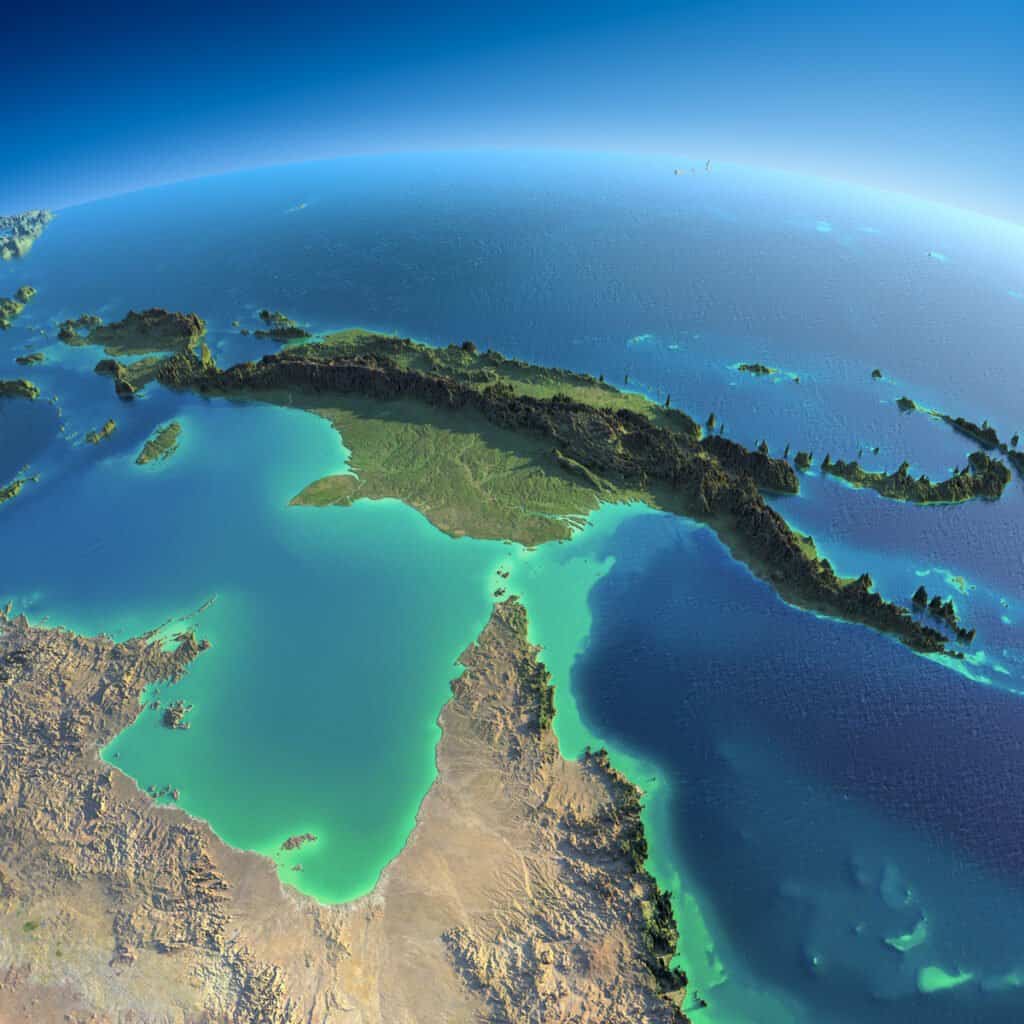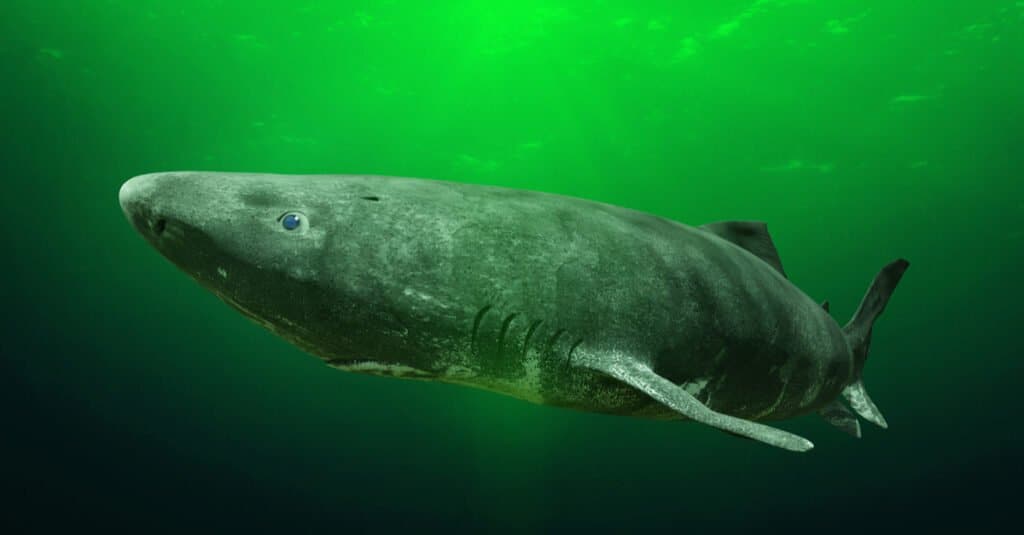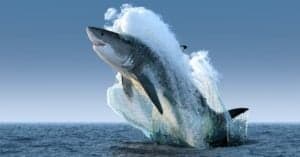Discover 6 Freshwater Shark Species!
When we think about sharks most people instantly assume they’re only found in the sea. Well, think again as there are actually several types of shark species which lurk in rivers. Some spend their entire lives in freshwater while others only come and go, but the most fascinating thing is their ability to adapt to an environment that physically they really shouldn’t be capable of living in. Join us as we discover just which sharks can live in freshwater and how they do it.
6. Ganges Shark

Regien Paassen/Shutterstock.com
Ganges sharks are true river sharks. This means that they have adapted to live in a freshwater environment and do not stray into saltwater at all. Although they were originally thought to inhabit only the Ganges, Hooghly and Brahmaputra rivers in India and Bangladesh their range has recently been extended. This is because the Borneo and Irrawaddy river sharks have been reclassified as subspecies of the Ganges shark, instead of being their own individual species as originally thought. Ganges sharks reach between 5 and 6.5 feet long and spend most of their time swimming at the bottom of the rivers while scanning the water above for prey.
Sharks don’t have swim bladders so they rely on their oil-filled livers to help them to stay afloat instead as the oil is lighter than the water. Saltwater is more buoyant than freshwater, so to compensate freshwater sharks require much larger livers to hold more oil to keep them afloat. As a true river shark, Ganges sharks are adapted to their environment as they have much larger livers than other sharks. This is why river sharks tend to have stockier bodies than marine sharks.
In addition, most sharks contain a lot of salt – so much that they are slightly saltier than the sea. This allows them to keep their salt inside them while they taking in water regularly through their gills and filtering out what they don’t need. However, if they are in freshwater then the salt in their bodies becomes diluted and their kidneys work harder to get rid of it. This weakens the sharks, causes dehydration and eventually death. River sharks contain less salt so that they don’t have this problem.
5. Bull Shark

bluehand/Shutterstock.com
The exception to the rule about marine sharks being unable to remain in freshwater for a prolonged period of time is the bull shark. Bull sharks don’t have as much salt in their bodies as other marine sharks. This makes it much easier for them to spend time in freshwater, although their kidneys still work hard to remove the extra freshwater that they take in. They do this by urinating up to twenty times more in freshwater than they do in saltwater. Also, their livers produce urea when needed, depending on the salinity of the water they are in. This means that bull sharks have the ability to regulate their bodies to live in either freshwater or saltwater.
Bull sharks are easily the most dangerous sharks to inhabit freshwater. They are large sharks with stocky bodies reaching around 11 feet long. They live worldwide in coastal areas, lakes, and hundreds of miles up rivers. A chilling sight was when bull sharks were caught swimming through the streets of Brisbane when the area was flooded in 2010. Not only that, but there is even a shark infested golf course in Australia too! Bull sharks entered the lake at Carbrook golf course after local rivers flooded in 1996 and have been trapped there ever since. However, it would seem that the population is doing just fine as there is currently around twelve bull sharks there, making retrieving any stray golf balls a really bad idea.
Bull sharks have a high number of recorded attacks. It is even believed that they were responsible for the deadly 1916 Jersey Shore attacks which were the inspiration for the Jaws novel. Two of the attacks occurred inland up Matawan Creek which points towards a shark capable of tolerating freshwater.
4. Northern River Shark

Anton Balazh/Shutterstock.com
Despite northern river sharks having the name river shark, it is mainly juvenile sharks rather than adults that live in freshwater rivers. Northern river sharks have stocky bodies, small eyes, and reach around 8 feet long. They live in tidal rivers, estuaries, and coastal bays in Australia and Papua New Guinea. Northern river sharks generally live in areas that have silty and muddy bottoms and poor visibility. Due to this they rely on electrical impulses to find their prey rather than using their eyesight. Although mature northern river sharks stay in coastal environments, both newborns and juveniles regularly travel into fresh or brackish water and young northern river sharks have been observed in many rivers in Australia. However, the entire population of the species may number no more than 250 mature individuals, making it one of the rarest sharks in the world.
3. Speartooth Shark
Although speartooth sharks are called river sharks, they live in both saltwater and freshwater. Speartooth sharks have streamlined bodies, a wide head with a flattened snout, and reach around 8.5 feet. They live in the coastal waters and tropical rivers in and around Australia and New Guinea, swimming with ease between the freshwater and saltwater. Speartooth sharks have been spotted several hundreds of miles upstream in Australian rivers. However, juveniles tend to travel further upstream than adults. Speartooth sharks regularly use the tidal currents to travel up and downstream without exerting much effort. They do this by travelling upriver with the incoming tide and downstream with the ebbing tide. Speartooth sharks are able to live in a range of salinities as they travel between the sea and the rivers.
2. Pondicherry Shark
Pondicherry sharks are one of the rarest sharks in the world and they have been observed in several rivers in India. They are relatively small – around 3ft 3in – and were thought to be extinct between the 1970’s and 2011. However, they were rediscovered in the Menik Ganga river in Sri Lanka in 2011 when one was caught and then released. As Pondicherry sharks are so rare very little is known about them. Due to this it’s not known exactly how they can tolerate freshwater. Despite this they have been seen in rivers more than in saltwater latterly. Therefore, it is possible to suggest that they can live in freshwater on a longer basis than might be expected.
1. Greenland Shark

Dotted Yeti/Shutterstock.com
One of the most unexpected sharks to be found in freshwater is the Greenland shark. Greenland sharks are massive sharks – reaching 21 feet long – and have the longest lifespan of any shark. They live for anything between 250 and 500 years and most don’t even reach maturity until they are 150. Not only that, but they regularly inhabit some of the deepest parts of the ocean, often diving to depths of more than 7,000 feet.
Greenland sharks live in the cold waters of the Arctic and North Atlantic oceans. However, they have also been observed in the Saguenay and St Lawrence rivers in Canada. Little is known about how long Greenland sharks can tolerate freshwater for. However, group of scientists observed a population of them in St Lawrence which were lacking the eye parasites that most Arctic Greenland sharks have. This led them to believe that there is a possibility they are an entirely separate population from those living in the ocean.
More from A-Z Animals
When we think about sharks most people instantly assume they’re only found in the sea. Well, think again as there are actually several types of shark species which lurk in rivers. Some spend their entire lives in freshwater while others only come and go, but the most fascinating thing is their ability to adapt to an environment that physically they really shouldn’t be capable of living in. Join us as we discover just which sharks can live in freshwater and how they do it.
6. Ganges Shark

Regien Paassen/Shutterstock.com
Ganges sharks are true river sharks. This means that they have adapted to live in a freshwater environment and do not stray into saltwater at all. Although they were originally thought to inhabit only the Ganges, Hooghly and Brahmaputra rivers in India and Bangladesh their range has recently been extended. This is because the Borneo and Irrawaddy river sharks have been reclassified as subspecies of the Ganges shark, instead of being their own individual species as originally thought. Ganges sharks reach between 5 and 6.5 feet long and spend most of their time swimming at the bottom of the rivers while scanning the water above for prey.
Sharks don’t have swim bladders so they rely on their oil-filled livers to help them to stay afloat instead as the oil is lighter than the water. Saltwater is more buoyant than freshwater, so to compensate freshwater sharks require much larger livers to hold more oil to keep them afloat. As a true river shark, Ganges sharks are adapted to their environment as they have much larger livers than other sharks. This is why river sharks tend to have stockier bodies than marine sharks.
In addition, most sharks contain a lot of salt – so much that they are slightly saltier than the sea. This allows them to keep their salt inside them while they taking in water regularly through their gills and filtering out what they don’t need. However, if they are in freshwater then the salt in their bodies becomes diluted and their kidneys work harder to get rid of it. This weakens the sharks, causes dehydration and eventually death. River sharks contain less salt so that they don’t have this problem.
5. Bull Shark

bluehand/Shutterstock.com
The exception to the rule about marine sharks being unable to remain in freshwater for a prolonged period of time is the bull shark. Bull sharks don’t have as much salt in their bodies as other marine sharks. This makes it much easier for them to spend time in freshwater, although their kidneys still work hard to remove the extra freshwater that they take in. They do this by urinating up to twenty times more in freshwater than they do in saltwater. Also, their livers produce urea when needed, depending on the salinity of the water they are in. This means that bull sharks have the ability to regulate their bodies to live in either freshwater or saltwater.
Bull sharks are easily the most dangerous sharks to inhabit freshwater. They are large sharks with stocky bodies reaching around 11 feet long. They live worldwide in coastal areas, lakes, and hundreds of miles up rivers. A chilling sight was when bull sharks were caught swimming through the streets of Brisbane when the area was flooded in 2010. Not only that, but there is even a shark infested golf course in Australia too! Bull sharks entered the lake at Carbrook golf course after local rivers flooded in 1996 and have been trapped there ever since. However, it would seem that the population is doing just fine as there is currently around twelve bull sharks there, making retrieving any stray golf balls a really bad idea.
Bull sharks have a high number of recorded attacks. It is even believed that they were responsible for the deadly 1916 Jersey Shore attacks which were the inspiration for the Jaws novel. Two of the attacks occurred inland up Matawan Creek which points towards a shark capable of tolerating freshwater.
4. Northern River Shark

Anton Balazh/Shutterstock.com
Despite northern river sharks having the name river shark, it is mainly juvenile sharks rather than adults that live in freshwater rivers. Northern river sharks have stocky bodies, small eyes, and reach around 8 feet long. They live in tidal rivers, estuaries, and coastal bays in Australia and Papua New Guinea. Northern river sharks generally live in areas that have silty and muddy bottoms and poor visibility. Due to this they rely on electrical impulses to find their prey rather than using their eyesight. Although mature northern river sharks stay in coastal environments, both newborns and juveniles regularly travel into fresh or brackish water and young northern river sharks have been observed in many rivers in Australia. However, the entire population of the species may number no more than 250 mature individuals, making it one of the rarest sharks in the world.
3. Speartooth Shark
Although speartooth sharks are called river sharks, they live in both saltwater and freshwater. Speartooth sharks have streamlined bodies, a wide head with a flattened snout, and reach around 8.5 feet. They live in the coastal waters and tropical rivers in and around Australia and New Guinea, swimming with ease between the freshwater and saltwater. Speartooth sharks have been spotted several hundreds of miles upstream in Australian rivers. However, juveniles tend to travel further upstream than adults. Speartooth sharks regularly use the tidal currents to travel up and downstream without exerting much effort. They do this by travelling upriver with the incoming tide and downstream with the ebbing tide. Speartooth sharks are able to live in a range of salinities as they travel between the sea and the rivers.
2. Pondicherry Shark
Pondicherry sharks are one of the rarest sharks in the world and they have been observed in several rivers in India. They are relatively small – around 3ft 3in – and were thought to be extinct between the 1970’s and 2011. However, they were rediscovered in the Menik Ganga river in Sri Lanka in 2011 when one was caught and then released. As Pondicherry sharks are so rare very little is known about them. Due to this it’s not known exactly how they can tolerate freshwater. Despite this they have been seen in rivers more than in saltwater latterly. Therefore, it is possible to suggest that they can live in freshwater on a longer basis than might be expected.
1. Greenland Shark

Dotted Yeti/Shutterstock.com
One of the most unexpected sharks to be found in freshwater is the Greenland shark. Greenland sharks are massive sharks – reaching 21 feet long – and have the longest lifespan of any shark. They live for anything between 250 and 500 years and most don’t even reach maturity until they are 150. Not only that, but they regularly inhabit some of the deepest parts of the ocean, often diving to depths of more than 7,000 feet.
Greenland sharks live in the cold waters of the Arctic and North Atlantic oceans. However, they have also been observed in the Saguenay and St Lawrence rivers in Canada. Little is known about how long Greenland sharks can tolerate freshwater for. However, group of scientists observed a population of them in St Lawrence which were lacking the eye parasites that most Arctic Greenland sharks have. This led them to believe that there is a possibility they are an entirely separate population from those living in the ocean.






